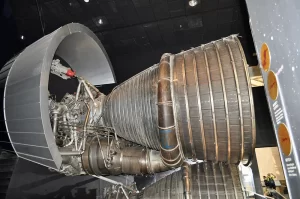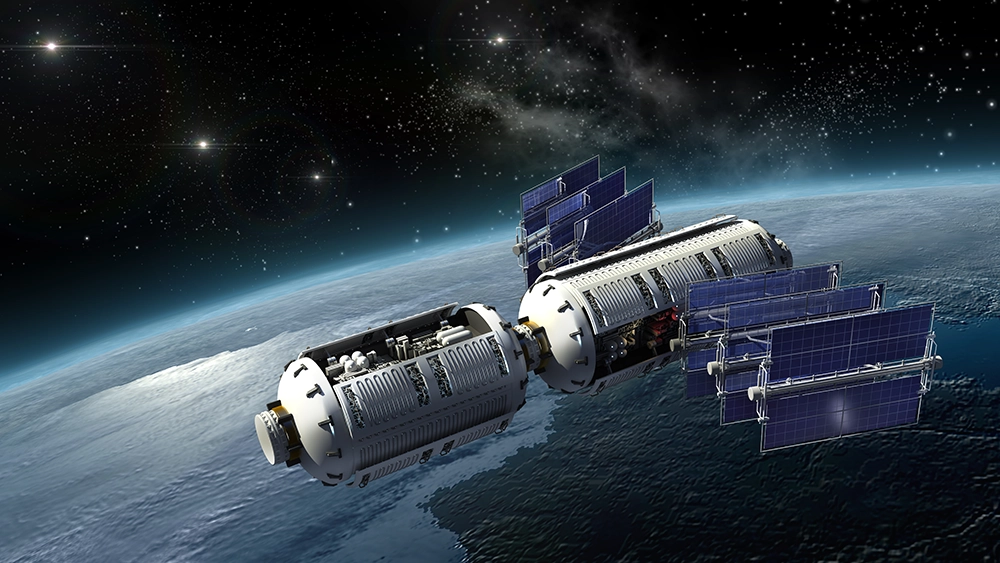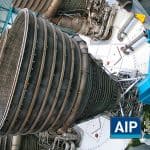
In the aerospace industry, the relentless pursuit of reliability and performance under extreme conditions is a constant. Cryogenic seals, essential components in space exploration vehicles and equipment, face the daunting task of maintaining integrity in the vastness of space.
Traditional materials often fall short in the face of extreme cryogenic temperatures and harsh environmental conditions. This article details the utilization of advanced polymers – FEP, PFA, PTFE, VESPEL®, and PCTFE – offering aerospace engineers robust solutions for their challenging cryogenic seal applications.
Challenges in Aerospace Cryogenic Sealing
Cryogenic sealing in aerospace confronts a number of challenges, primarily due to the extreme temperature fluctuations when operating in the vacuum of space. Traditional materials like elastomers, while adequate in moderate conditions, become brittle and lose elasticity at temperatures below -60°F (-51°C) or above 300°F (149°C), leading to failures in seals. This necessitates the exploration of materials that can endure such harsh conditions while maintaining their mechanical properties.
High-performance polymers not only meet but exceed the stringent requirements of aerospace applications, making them the materials of choice for cryogenic seals. Here we’ll detail the unique attributes of FEP, PFA, PTFE, VESPEL®, and PCTFE, and how each contributes to overcoming the unique challenges of space.
High-Performance Polymers: An Overview
In aerospace applications, especially for cryogenic seals, the choice of material is critical. High-performance polymers like FEP (Fluorinated Ethylene Propylene), PFA (Perfluoroalkoxy Alkane), PTFE (Polytetrafluoroethylene), VESPEL®, and PCTFE (Polychlorotrifluoroethylene) offer unique properties that make them superior to conventional sealing materials in extreme conditions.
Detailed Analysis of Each Polymer
The following list explains key properties of high-performance polymers — FEP, PFA, PTFE, VESPEL®, and PCTFE — such as chemical resistance, thermal stability, and application suitability. This comparison provides aerospace engineers with essential data for informed material selection in cryogenic environments.
FEP: This polymer is known for its exceptional resistance to aggressive chemicals, making it ideal for handling the corrosive substances often encountered in aerospace applications. FEP maintains robust physical properties even at very low temperatures, crucial for cryogenic applications. Its ability to withstand a wide temperature range (-328°F to 400°F) without losing its mechanical properties makes it an excellent choice for seals that need to maintain integrity in varying thermal conditions.
PFA: Similar to FEP in its resistance to chemicals, PFA offers even greater strength at high temperatures, up to 500°F. This thermal stability is critical in aerospace applications where seals may be exposed to rapid temperature changes. Its non-stick and low friction properties also contribute to its suitability for dynamic sealing applications where minimal resistance is desired.
PTFE: Renowned for its outstanding chemical inertness, PTFE remains stable across a wide temperature range, from -328°F to 500°F. This makes PTFE particularly capable in cryogenic sealing, where materials are often exposed to extremely low temperatures. PTFE’s low coefficient of friction minimizes wear in dynamic applications, extending the lifespan of seals under motion.
VESPEL®: This polyimide-based thermoplastic is distinguished by its exceptional heat resistance, with a continuous operating temperature up to 500°F. Its low outgassing properties at high temperatures make it suitable for vacuum applications, a common scenario in space environments. VESPEL®’s dimensional stability and creep resistance are vital in maintaining seal integrity under fluctuating pressure and temperature conditions, common in cryogenic aerospace applications.
PCTFE: Known for its low moisture absorption, PCTFE is especially useful in vacuum conditions like those found in space. Its high compressive strength and nonflammability are essential for maintaining seal integrity in the presence of cryogenic fluids. PCTFE’s excellent chemical resistance ensures durability when exposed to aggressive chemicals, a common challenge in aerospace environments.
 Each of these polymers brings a unique set of properties to the table, making them highly suitable for the demanding requirements of aerospace cryogenic seals. Their combined characteristics of chemical resistance, thermal stability, low moisture absorption, and mechanical durability under extreme conditions position them as optimal materials for aerospace applications, where failure is not an option.
Each of these polymers brings a unique set of properties to the table, making them highly suitable for the demanding requirements of aerospace cryogenic seals. Their combined characteristics of chemical resistance, thermal stability, low moisture absorption, and mechanical durability under extreme conditions position them as optimal materials for aerospace applications, where failure is not an option.
Having explored the individual properties and benefits of each high-performance polymer, it’s crucial to understand how they compare when applied to aerospace cryogenic seals.
This comparative analysis will shed light on the practical implications of choosing one polymer over another, considering the specific demands of aerospace applications. By evaluating their performance side-by-side, we can discern the most suitable material for specific cryogenic sealing applications in the aerospace industry.
Comparative Analysis: Aerospace Applications
Comparing these polymers reveals each material’s unique advantages for cryogenic seals in aerospace. PTFE’s low friction makes it suitable for dynamic seals, while VESPEL’s thermal stability is crucial for static applications in extreme temperatures. PCTFE’s moisture resistance is invaluable in the vacuum of space.
The following table compares key properties of high-performance polymers — FEP, PFA, PTFE, VESPEL®, and PCTFE — such as chemical resistance, thermal stability, and application suitability. This comparison provides aerospace engineers with essential data for informed material selection in cryogenic environments.

| Polymer | Chemical Resistance | Thermal Stability | Low Friction | Outgassing at High Temp | Moisture Absorption | Applications in Aerospace |
| FEP | High | -328°F to 400°F | Yes | Low | Low | Dynamic Seals |
| PFA | High | -328°F to 500°F | Yes | Low | Low | Dynamic Seals |
| PTFE | Highest | -328°F to 500°F | Yes | Low | Low | Dynamic Seals |
| VESPEL® | High | Up to 500°F | No | Minimal | Small amount | Static Applications |
| PCTFE | High | Low | No | N/A | Low | Static Applications |
The comparative analysis underscores the tailored suitability of each polymer for specific aerospace applications. However, selecting the right material is only part of the equation. The next critical step is the precision machining of these materials into functional cryogenic seals. This section will discuss the machining considerations essential for realizing the potential of these high-performance polymers in aerospace applications. AIP Precision Machining’s expertise in this domain ensures that the advanced properties of these polymers are fully harnessed in the final cryogenic seal products.
Machining Considerations for Aerospace Cryogenic Seals
The machining of materials for cryogenic seals demands meticulous attention to detail. Given the extreme conditions of space, even minuscule discrepancies in the dimensions of a seal can lead to catastrophic outcomes. It is here that the micro-precision in machining comes into play, especially for high-performance polymers like FEP, PFA, PTFE, VESPEL®, and PCTFE.
The precision required for these polymers is of the highest order, often necessitating tolerances as tight as 0.002 mm. This level of accuracy is imperative to ensure that each seal perfectly fits its designated space, providing an airtight barrier against the harsh conditions of outer space.
Any deviation, however minor, can compromise the integrity of the seal, leading to potential failure of the system it is meant to protect. In the vacuum of space, where repair is not a viable option, the reliability of every component is crucial.
For polymers like PTFE and VESPEL®, known for their low friction and thermal stability, the precision in machining also dictates their performance over time. Inaccuracies in dimensions can lead to increased wear and tear, reducing the longevity of these components in critical aerospace applications.
Similarly, for PCTFE and FEP, known for their chemical resistance and low moisture absorption, precision machining ensures that their properties are fully utilized, maintaining the seal’s integrity in the presence of volatile cryogenic fluids.
AIP Precision Machining has routinely demonstrated the capability to achieve extreme precision of up to 0.002 mm. AIP stands at the forefront of machining high-performance polymers for aerospace applications, as their experienced technicians and state-of-the-art technology ensure that each component is machined to exact specifications, leaving no room for error.
By entrusting the machining of cryogenic seals to AIP, aerospace engineers can significantly mitigate the risks associated with material and manufacturing inaccuracies, ensuring the reliability and success of their space missions.
In conclusion, the precision in machining cryogenic seals from high-performance polymers is not just a matter of technical requirement but a critical factor in the success of aerospace projects. The utilization of advanced machining capabilities, such as those offered by AIP Precision Machining, is crucial in ensuring that these components meet the stringent demands of space, where every micron counts and any error can lead to irrevocable consequences.
———————
Citations:
- https://pubs.aip.org/aip/acp/article/985/1/422/990643/DEVELOPMENT-OF-A-CRYOGENIC-GATE-VALVE-WITH-ROBUST
- https://www.sciencedirect.com/science/article/abs/pii/S0042207X76800103?via%3Dihub






